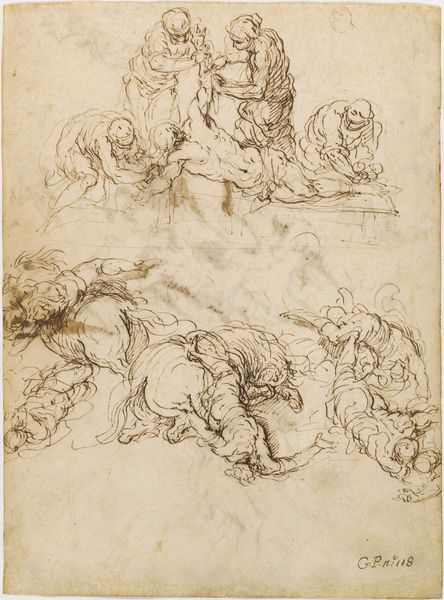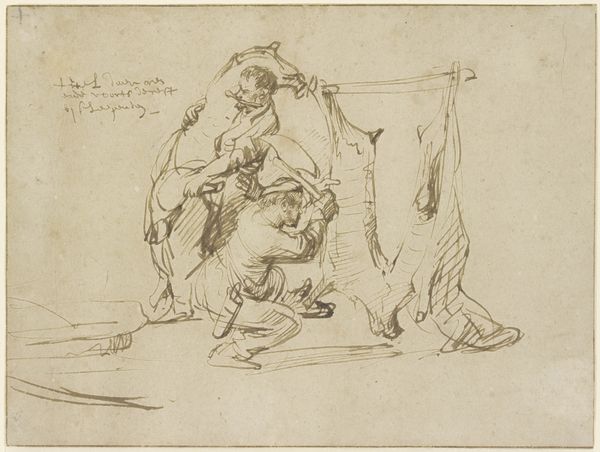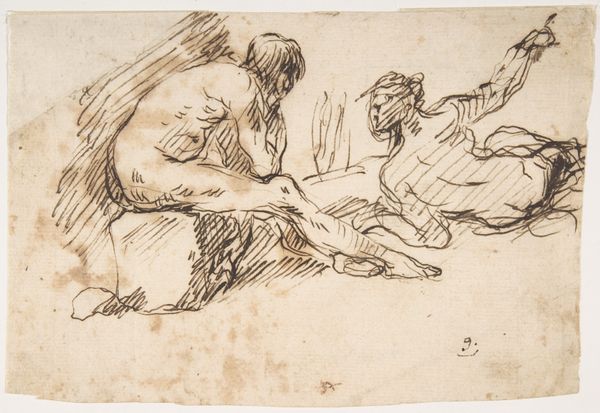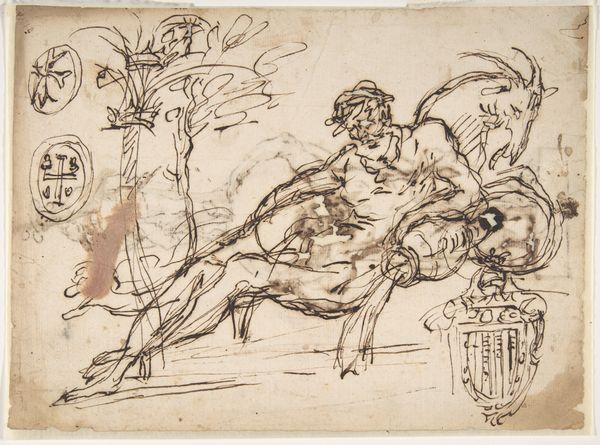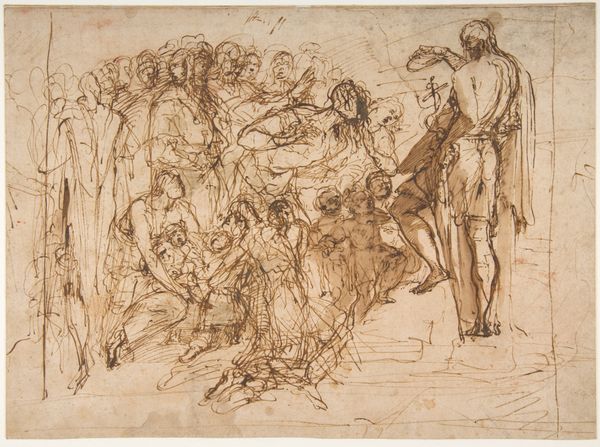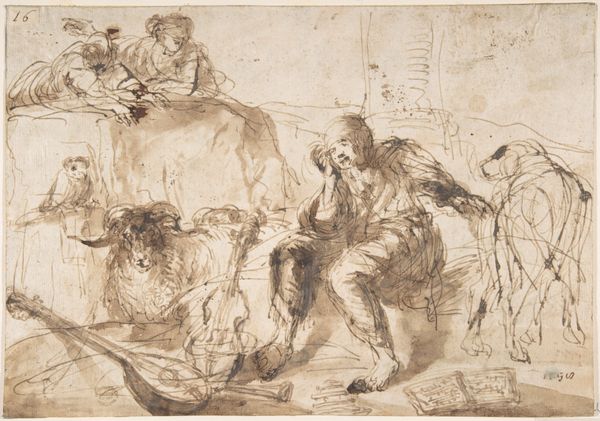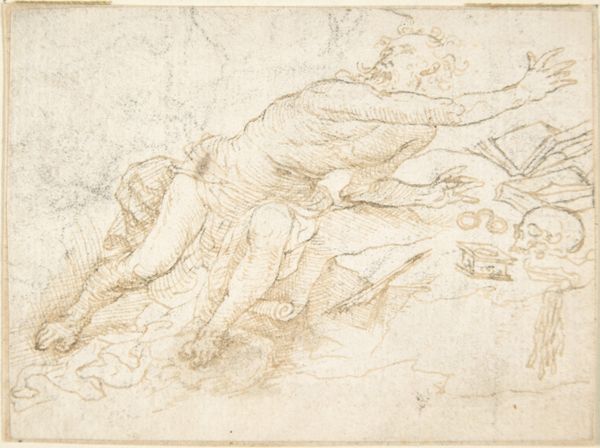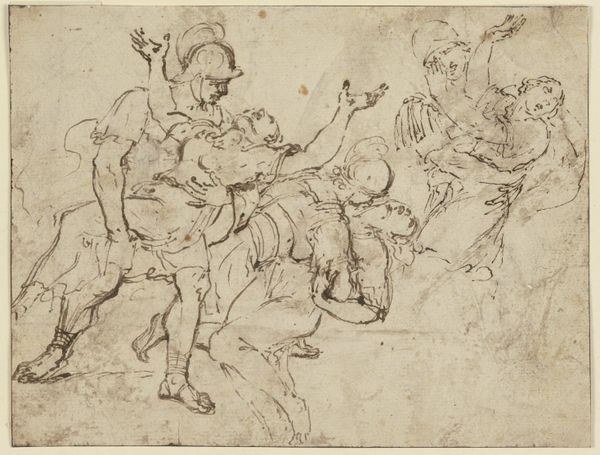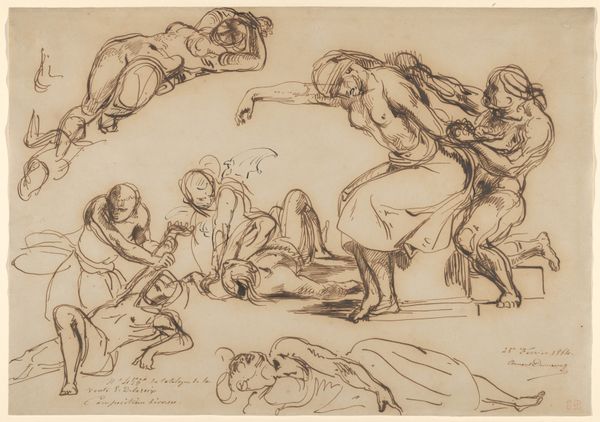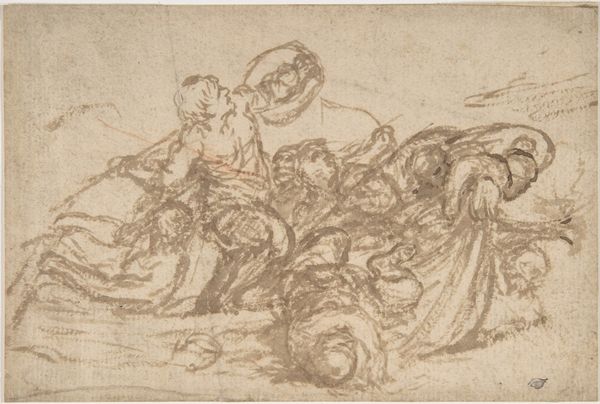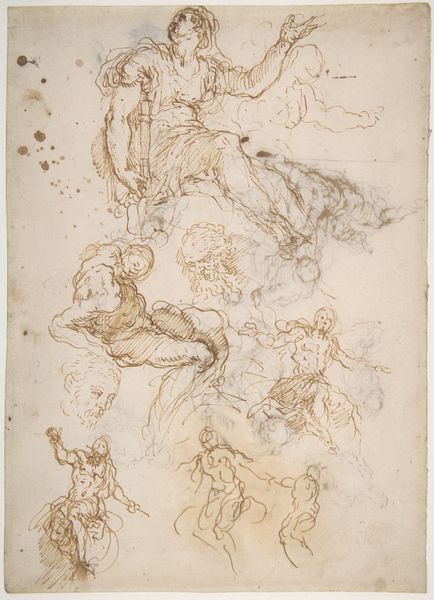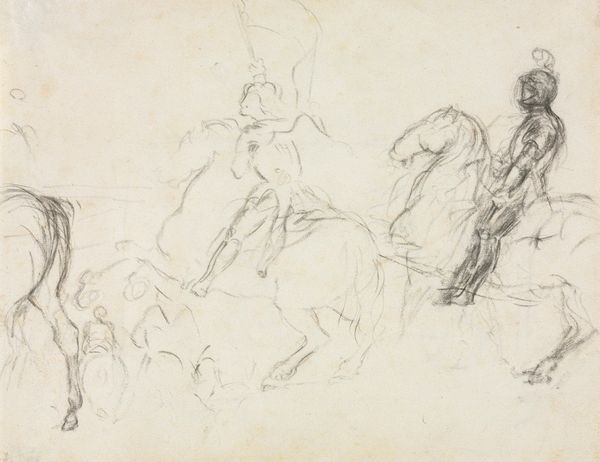
drawing, ink
#
drawing
#
narrative-art
#
ink painting
#
figuration
#
ink
#
history-painting
#
academic-art
Dimensions: 6 7/8 x 9 1/2 in. (17.46 x 24.13 cm)
Copyright: Public Domain
Curator: Before us is a drawing entitled "The Good Samaritan," attributed to Simone Papa III, dating back to the 17th century, executed in ink. Editor: It's so gestural! The loose lines convey a real sense of urgency and vulnerability, almost as if the artist were sketching a fleeting, poignant moment. The monochromatic palette also adds to the solemnity. Curator: Absolutely. The narrative is central here, stemming from the biblical parable. The layering of ink and the cross-hatching suggest an economy of material used to generate form, typical for drawings meant to refine a concept. I am curious, what meaning the Samaritan on his horse had for people at the time. Was the horse, being a valuable asset and tool, proof of social status? Did its depiction here underscore an additional element of sacrifice by the Samaritan? Editor: Considering the parable’s significance, the imagery resonates deeply. The horse becomes an emblem not just of wealth but of active compassion, the mounted figure visually reinforces that journey from indifference to engaged mercy, wouldn't you say? The visual vocabulary of aid itself gains power. The Samaritan is positioned with a down-reaching gesture which repeats itself from many depictions in time as signifier for charity. Curator: I concur. What's intriguing is how the medium, the ink, also speaks to broader social contexts of production during that period. Paper availability, the specific ink formulation... These details subtly position the work within its historical moment and speak to the economics that would support image creation. The level of finish and perceived utility of the work give some insight into its creator, but its true use could only be speculated. Editor: That attention to materiality is critical, but for me, this image crystallizes a perennial human drama through specific visual cues. I mean, a vulnerable figure on the ground being aided represents a cultural touchstone—kindness, vulnerability, the importance of the human touch. Curator: Ultimately, this work reminds us that art objects, regardless of scale or intended purpose, emerge from very particular conditions and that artistic expression is always grounded in very practical material concerns. Editor: Yes, and yet, even those conditions support visual vocabularies that carry cultural and ethical weights that persist long beyond their initial creation.
Comments
No comments
Be the first to comment and join the conversation on the ultimate creative platform.
